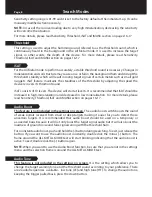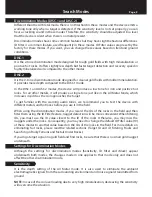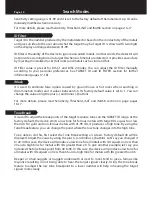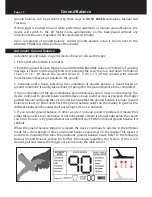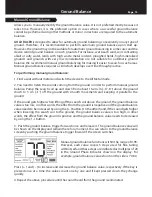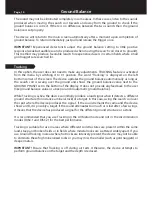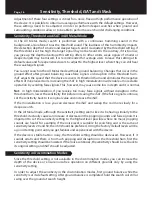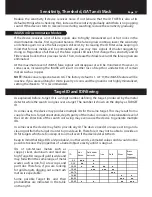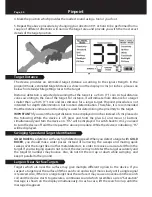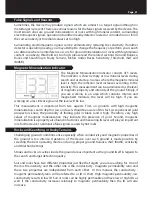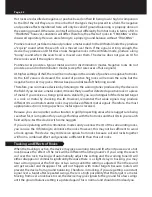
Tracking and Effects of Rocks
Hot rocks are classified as negative or positive based on their ID being low or high in comparison
to the ID of the soil they are in. One or both of the types may be present in a field. The negative
and positive effects mentioned here will only be valid if ground balancing is properly done on
the existing ground. Otherwise, soil itself will not act differently from hot rocks in terms of ID. In
''TRACKING'' however, conditions will differ. Therefore, the effects of rocks in ''TRACKING'' will be
discussed separately. Here we are referring to a proper ground balance without ''TRACKING''.
Positive rocks act just like metal and produce a metal sound. In the All Metal mode they produce
a “zip zip” sound when the search coil is moved over them. If the signal is strong enough, the
device may produce an ID for these rocks. Negative rocks in the All Metal mode, produce a long
“boing” sound when the search coil is moved over them. The device does not give an ID for
these rocks even if the signal is strong.
Positive rocks provide a typical metal sound in discrimination modes. Negative rocks do not
provide a sound in discrimination modes (except for rare cases of false signals).
At higher settings of iSAT, there will be no change in the sounds of positive or negative hot rocks.
As the iSAT value is decreased, the sound of positive hot rocks will remain the same but the
negative hot rocks may give a thinner beep sound instead of the boing sound.
Therefore, you can make a decision by listening to the warning tones produced by the device in
the field. If you receive a metal sound, it means that you either detected a positive rock or a piece
of metal. If you receive a strong signal and a stable ID, you can distinguish if the detected target
is a rock or metal by checking the ID. However, remember that weak signals may produce
different IDs and metals under rocks may produce different metal signals. Therefore, the most
appropriate action is to dig up when a metal signal is received.
Because you can encounter such a situation in gold prospecting areas where nuggets are being
searched for, it is important for you to get familiar with the hot rocks and their IDs in your search
field and pre-test the device with some nuggets.
If you are operating with discrimination modes and you know the ID of the surrounding rocks,
you can use the ID filtering to eliminate the rocks. However, this may not be sufficient to avoid
all rock signals. The device may still receive signals from rocks because soil and rocks together
will form a combined effect and generate a different ID than those of rocks.
When the tracking is active, the device may give a warning tone and ID when it passes over a hot
rock because the effect of the rock will be different than the ground's. If you swing the search
coil over the rock, tracking will automatically adjust the setting and the warning tone/ID will
either disappear or diminish significantly. Because there is a slight delay in tracking, you may
hear a strong signal at the first one or two swings until the setting is adjusted. Then the sound
will get weaker and disappear. This will not happen with metal targets because metals will
prevent the device from ground balancing. Therefore, in tracking, if you are getting a constant
signal over a target after repeated swings, there is a high possibility that the target is a metal.
Moving from over a rock back to soil, the device may give signals to the ground for a few swings
until the ground balance setting is updated again. This is normal and should not mislead you.
Page_22

